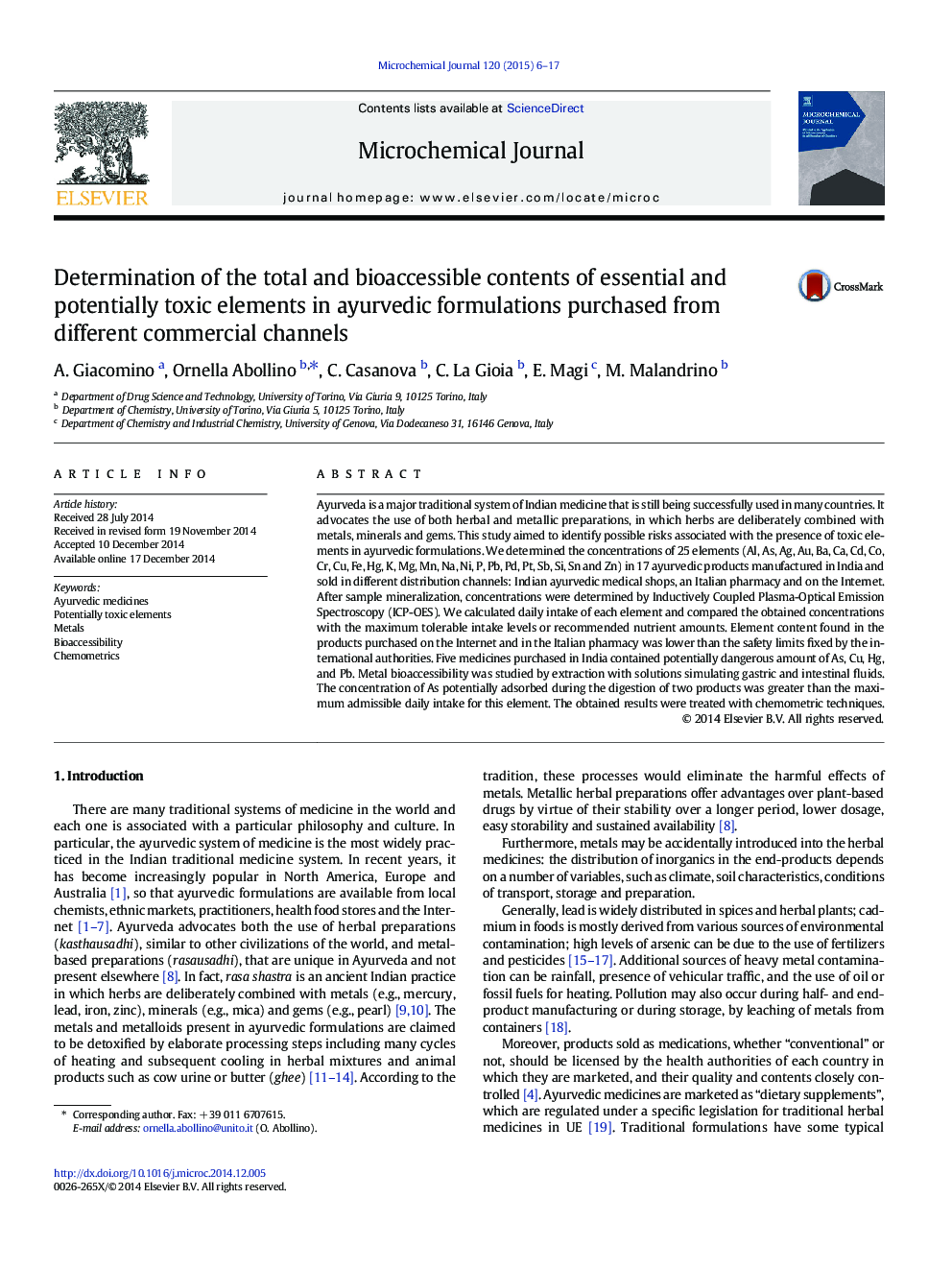| کد مقاله | کد نشریه | سال انتشار | مقاله انگلیسی | نسخه تمام متن |
|---|---|---|---|---|
| 1227705 | 1494874 | 2015 | 12 صفحه PDF | دانلود رایگان |
• Some ayurvedic medicines purchased in India contained potentially dangerous amounts of As, Cu, Hg, and Pb
• The names of ayurvedic formulations are often indicative of their main component, or of the manufacturing procedure
• The fractions of bioaccessible metals were lower than their total concentration
• In some cases the bioaccessible metal amounts were higher than the maximum admissible levels
Ayurveda is a major traditional system of Indian medicine that is still being successfully used in many countries. It advocates the use of both herbal and metallic preparations, in which herbs are deliberately combined with metals, minerals and gems. This study aimed to identify possible risks associated with the presence of toxic elements in ayurvedic formulations. We determined the concentrations of 25 elements (Al, As, Ag, Au, Ba, Ca, Cd, Co, Cr, Cu, Fe, Hg, K, Mg, Mn, Na, Ni, P, Pb, Pd, Pt, Sb, Si, Sn and Zn) in 17 ayurvedic products manufactured in India and sold in different distribution channels: Indian ayurvedic medical shops, an Italian pharmacy and on the Internet. After sample mineralization, concentrations were determined by Inductively Coupled Plasma-Optical Emission Spectroscopy (ICP-OES). We calculated daily intake of each element and compared the obtained concentrations with the maximum tolerable intake levels or recommended nutrient amounts. Element content found in the products purchased on the Internet and in the Italian pharmacy was lower than the safety limits fixed by the international authorities. Five medicines purchased in India contained potentially dangerous amount of As, Cu, Hg, and Pb. Metal bioaccessibility was studied by extraction with solutions simulating gastric and intestinal fluids. The concentration of As potentially adsorbed during the digestion of two products was greater than the maximum admissible daily intake for this element. The obtained results were treated with chemometric techniques.
Journal: Microchemical Journal - Volume 120, May 2015, Pages 6–17
